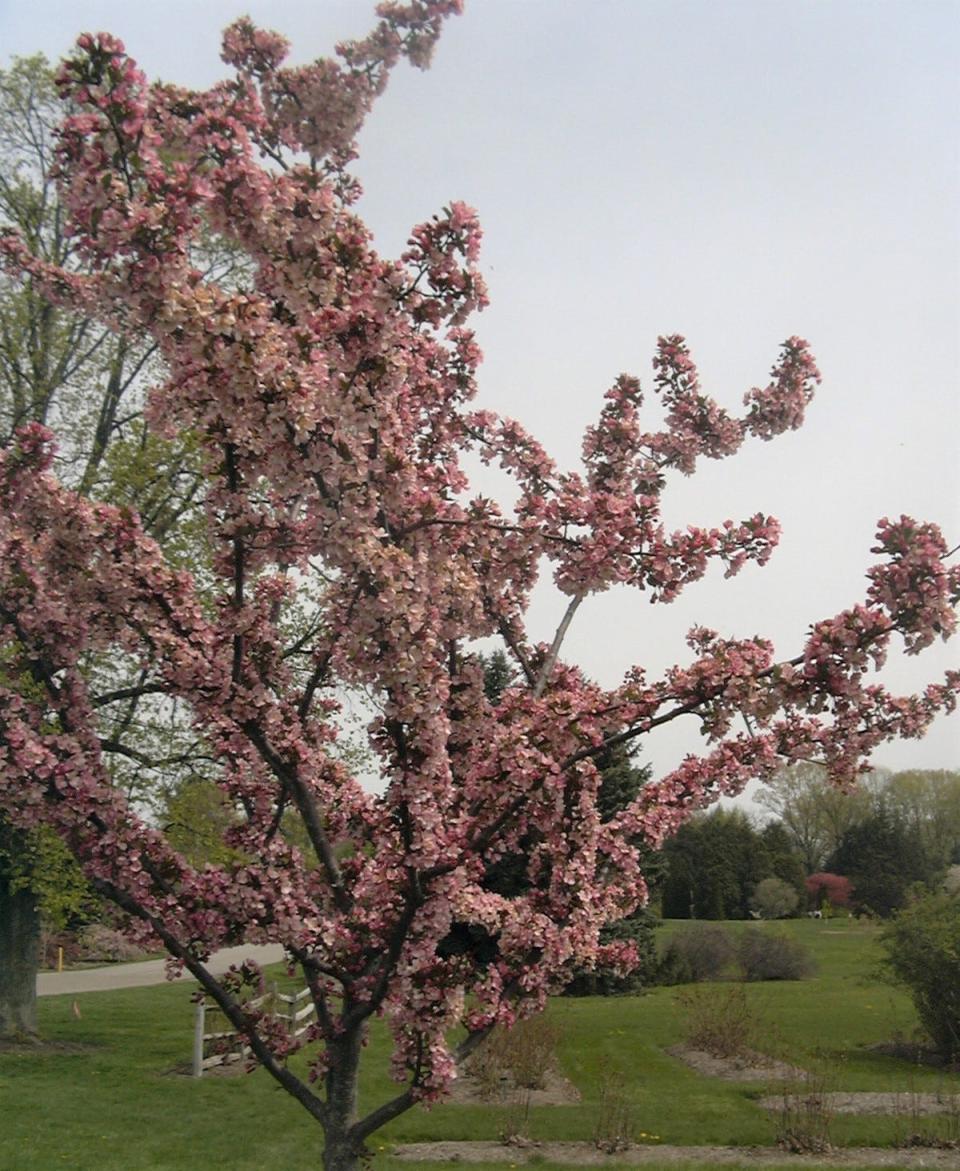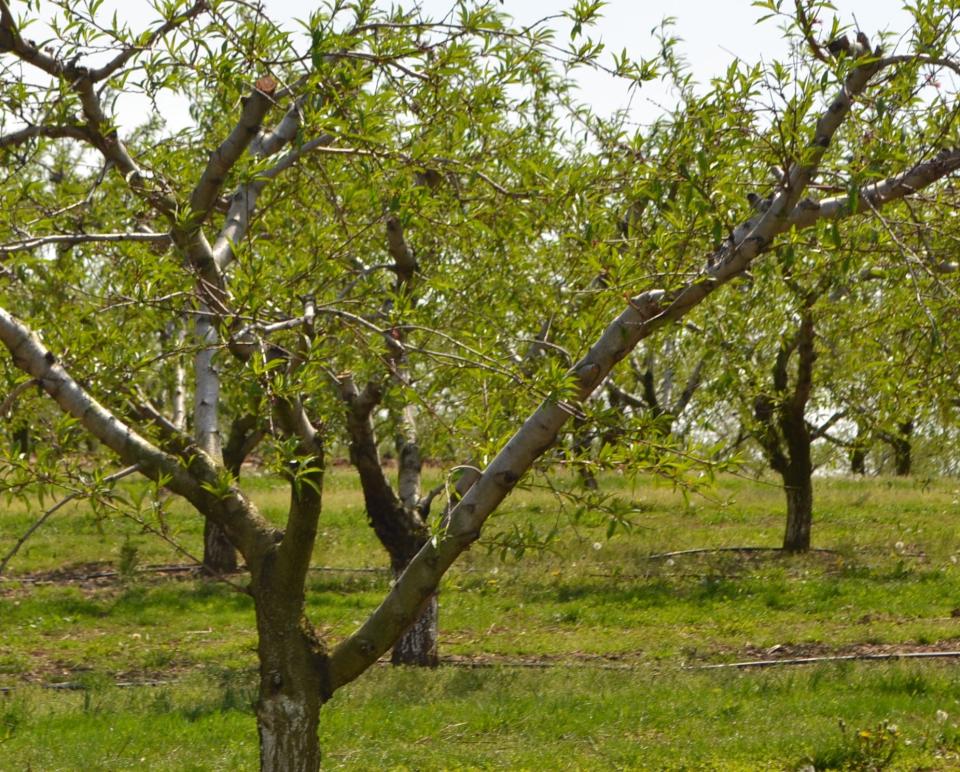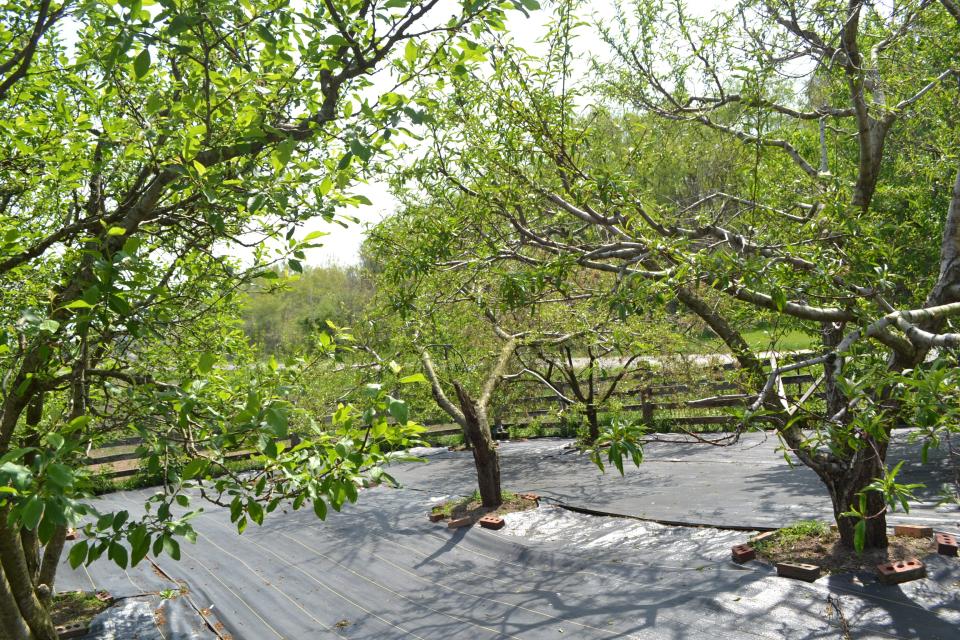A Stroll Through the Garden: More tips for starting an orchard
Last week's column on starting an orchard centered on these two questions: How do you start an orchard? What do you want to do with the orchard?
The zone that we live in will have an effect on trees that will survive in our zone. Each tree will do better in certain soils as compared to other types of soil. For fruit to set, you will also have to understand the type of pollination that takes place with your particular fruit trees. My hope is that these two columns will go far to help you get started planting your orchard.

If you have a large amount of space and are hoping for a massive amount of production, then you would be fine with a standard tree that can potentially get up to 30 feet tall. On the other hand, if the space you have is limited and you would like to harvest closer to the ground, the dwarf or semi-dwarf fruit varieties may be a good solution. My parents had a few dwarf apples for a number of years. My sister pruned this tree, and I remember being shocked that it came back strong later.
One of my pet peeves as a landscaper dealt with watering. I would ask all of the homeowners to make sure they would water their new plantings when we left the home after the installation. As a matter of fact, the importance of watering was written into my contracts. If you did not water your plants, you would have violated the two-year warranty that was on my installation contract. Make no mistake — during the summer you will need to water the trees in your orchard. Follow the instructions on how often and how much you should water your fruit trees. Every summer is different. I have seen a compound that is able to retain moisture. The material in diapers or Aerogel or other material that retains water in the hole will give you an advantage in keeping your new orchard moist. I have always recommended installing mulch around the base of the tree and black landscape fabric to reduce the water loss and keep down the weeds.

Age of the tree to be planted matters
How old of a tree do you want to install in your orchard? That is our next question. If everything is set and you buy little whips, put them in the ground in the spring to allow the tree time to get established to get some roots out. You may still be looking at seven years for some of your first fruit to grow on your trees. There are some growers that can guarantee a first-year harvest, but that is not the norm and you pay a higher price for this opportunity. I have long been a proponent of isolation beds where a transplant could be moved to preserve perennials that you would not necessarily want to lose.
Our wild card thought would be to grow some of the whips or smaller plants in containers for a time. You can improve the flexibility of the orchard and maybe save some headaches down the line by planting some smaller trees in pots temporarily. After you have installed the trees, mildly fertilize them for three weeks wherever they are planted. In the winter move your potted plants to a hoop house so that your roots do not freeze. When you move the pots to the hoop house, allow enough space and top shading and sides. Put wood shavings 4 inches deep amongst the posts in the hoop house. If you run out of time, you can also dig a trench and dig them in well enough that they touch the soil.
Members of the Prunus family like plum and apple grow leaves with a special protection against fire blight, which is a bacteria, if they grow slow. If you grow them too fast and the twigs stretch, that affects the leaves, twigs, branches and buds, the protective coating can be removed and the twig is exposed to fire blight. Larger orchards are using streptomycin to control the fire blight bacteria. There is work for the small orchard holder, just get a saw to remove and burn the wood. The way you get fire blight is by trying to grow the tree too fast and the leaves grow out of the protective covering that the tree naturally has. What you need to do is to mildly fertilize, if at all, for these Prunus family trees.

There is still more to starting an orchard than I can even adequately cover here. Soon I shall write a blog on this topic linking all the columns.
Have a great stroll through your indoor and outdoor gardens this week. This short period of time for planning will not last forever as winter will in time come to an end. If you see some challenges, drop me an email at ericlarson546@yahoo.com. I’ll do my best to help. Thank you for your participation in our column.
Eric Larson of Jeromesville is a veteran landscaper and gardening enthusiast and a founding board member of the Ohio Chapter of Association of Professional Landscape Designers.
This article originally appeared on Mansfield News Journal: More tips for growing your own orchard

